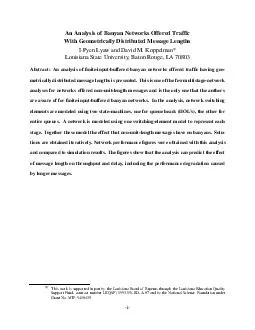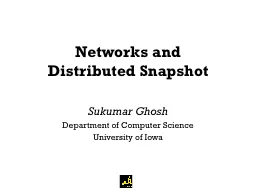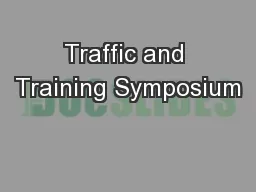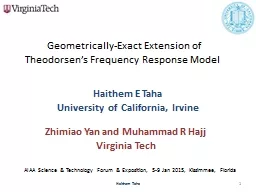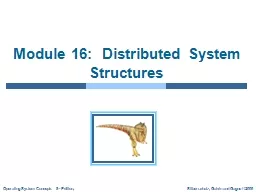PDF-An Analysis of Banyan Networks Offered Traffic With Geometrically Distributed Message
Author : natalia-silvester | Published Date : 2014-12-11
Koppelman Louisiana State University Baton Rouge LA 70803 Abstract An analysis of 731niteinputbuffered banyan networks offered traf731c having geo metrically distributed
Presentation Embed Code
Download Presentation
Download Presentation The PPT/PDF document "An Analysis of Banyan Networks Offered T..." is the property of its rightful owner. Permission is granted to download and print the materials on this website for personal, non-commercial use only, and to display it on your personal computer provided you do not modify the materials and that you retain all copyright notices contained in the materials. By downloading content from our website, you accept the terms of this agreement.
An Analysis of Banyan Networks Offered Traffic With Geometrically Distributed Message: Transcript
Download Rules Of Document
"An Analysis of Banyan Networks Offered Traffic With Geometrically Distributed Message"The content belongs to its owner. You may download and print it for personal use, without modification, and keep all copyright notices. By downloading, you agree to these terms.
Related Documents

